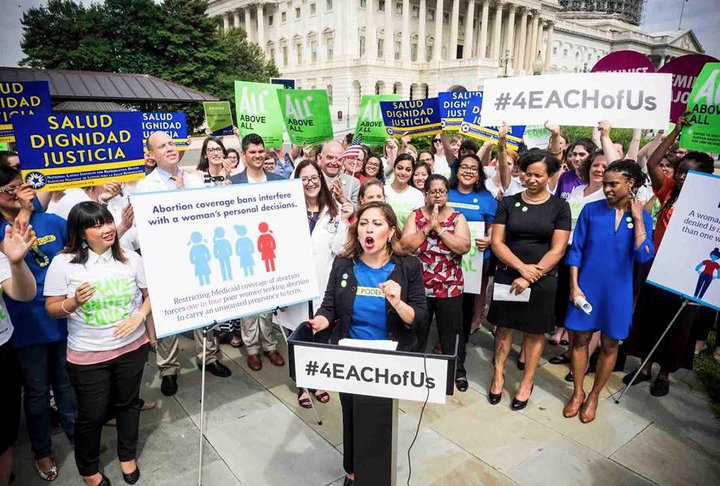Last month, the Alaska Supreme Court struck down a law that severely restricted state Medicaid funding for abortions. Under this law, only those abortions necessary to prevent a threat of serious risk to the woman’s life or physical health were covered by the state’s Medicaid funding. According to the court, this law violated the Alaska state constitution’s equal protection clause because it treated two distinct classes of people – women who seek abortions and women who seek to carry their pregnancy to term – unequally. By subsidizing the costs of pregnancy and childbirth but refusing to do the same for abortion, the court held that the state was burdening women’s ability to exercise their constitutional right to abortion.
With this decision, Alaska joins 16 other States whose Medicaid funding covers the cost of abortion. However, for the majority of women on Medicaid in the US, state and federal legislation has made accessing affordable abortion services nearly impossible.
Restrictions on Medicaid funding for abortion were initially devised by Congress in 1976, only three years after the Supreme Court announced women’s constitutional right to abortion in Roe v. Wade. The first in a lengthy series of legislative restrictions designed to weaken Roe’s power, the “Hyde Amendment” prohibits the use of federal Medicaid funds to cover the cost of abortions. The only exceptions Hyde provides are 1) when continuing the pregnancy endangers the woman’s life or 2) when the pregnancy was the result of rape or incest. Under the Hyde Amendment, each state can still extend state Medicaid funding to cover abortion costs (as the court in Alaska has now mandated). However, 33 states and DC have followed Congress’ lead, explicitly prohibiting the use of state funds for abortions unless federal Medicaid funding is available in cases of medical necessity, rape, and incest.
The Hyde Amendment – like its state counterparts – is woefully inadequate to protect even the class of women it allows Medicaid funding. As the Alaska Supreme Court detailed, the medical necessity exceptions cover only the most severe physical health disorders and completely disregard mental health conditions. The court explained that this might force a woman suffering from bipolar disorder, for example, to discontinue her medication (which poses a risk to the fetus’ health) if she cannot afford the out-of-pocket cost of an abortion. In practice, survivors of sexual assault rarely receive Medicaid funding for abortions, perhaps partially because of state Medicaid requirements that they report their assaults to the police. In 2017, nine states reported spending $0 of Medicaid funding toward abortion services for cases of rape and incest.
More broadly, these laws severely restrict access to abortion for the 1 in 5 women of reproductive age who receive health insurance through Medicaid, essentially creating “two starkly different nations for reproductive healthcare” between women who can pay for abortions and those who cannot. Abortions can cost between $500-$1500 (a large sum in its own right), but because of restrictive state legislation, the cost of abortion often extends far beyond the procedure itself. Women may have to travel hundreds of miles to the nearest abortion clinic and then find housing while they wait up to three days during the mandatory “waiting period” between their appointment and their abortion. Some studies suggest that for more than half of the women who receive an abortion, the costs of the procedure, travel, and hotel adds up to more than one-third of their monthly personal income.
Because racism, sexism, and economic inequality are deeply connected in the country’s history, these laws disproportionately burden women of color. 30% of black women and 24% of Latina women are enrolled in Medicaid, compared with 14% of white women. This is why the women-of-color-led reproductive justice movement has continuously centered access to abortion funding in its activism and has frequently called for Congress to repeal Hyde.
We may have to look beyond the Supreme Court for solutions to this issue: the constitutionality of Medicaid funding bans was upheld in 1980, and the current court threatens to overturn Roe v. Wade altogether. For this reason, reproductive justice advocates throughout the country are focusing their activism on state legislatures and on Congress, who has the opportunity to pass legislation such as the Equal Access to Abortion Coverage in Health Insurance (EACH Woman) Act. If state and federal legislators listen to the activists leading this charge, women across the US may finally have a chance to exercise their constitutional right to abortion free from restrictive Medicaid funding laws.

